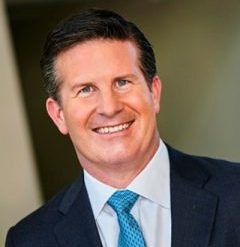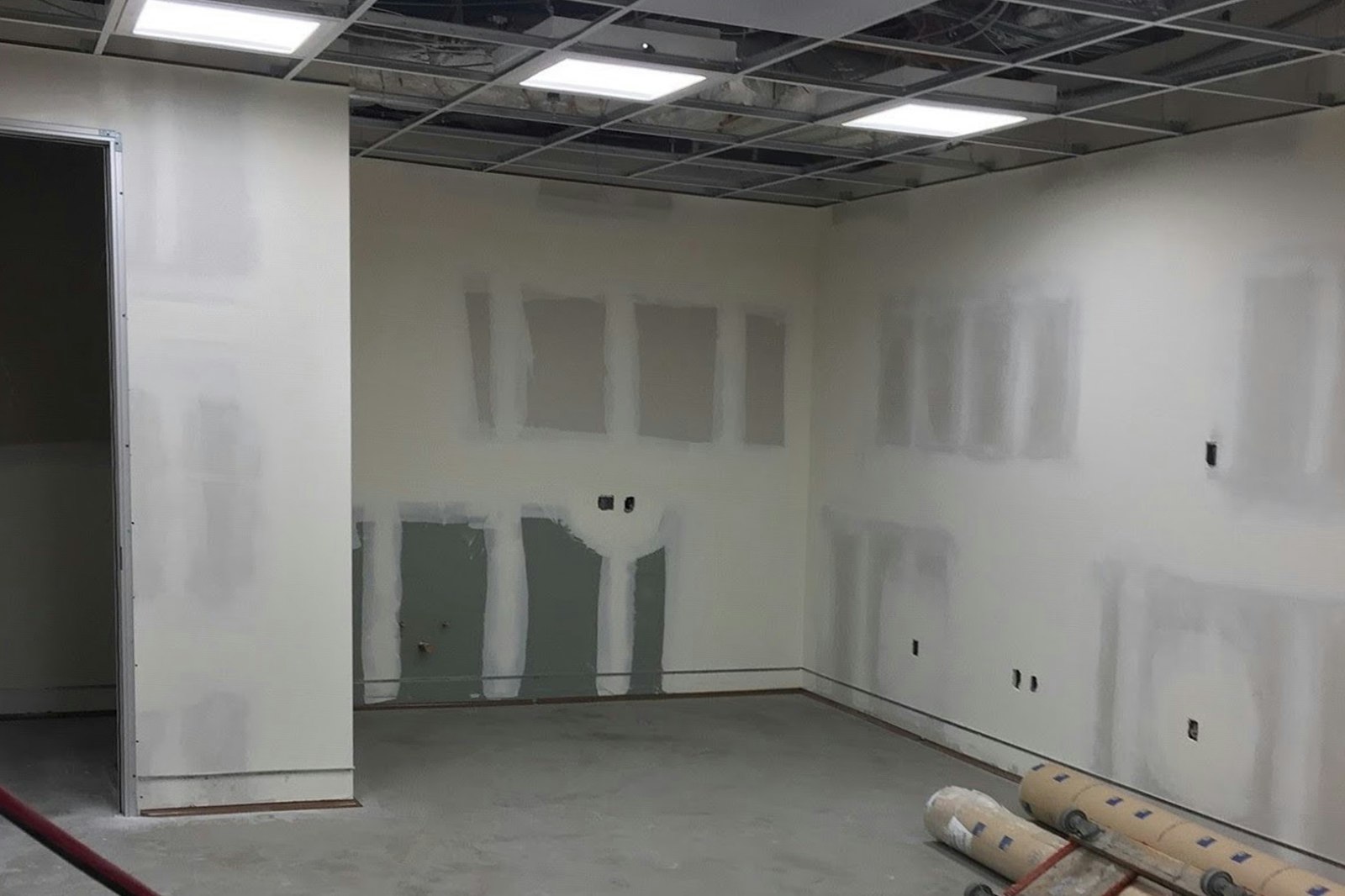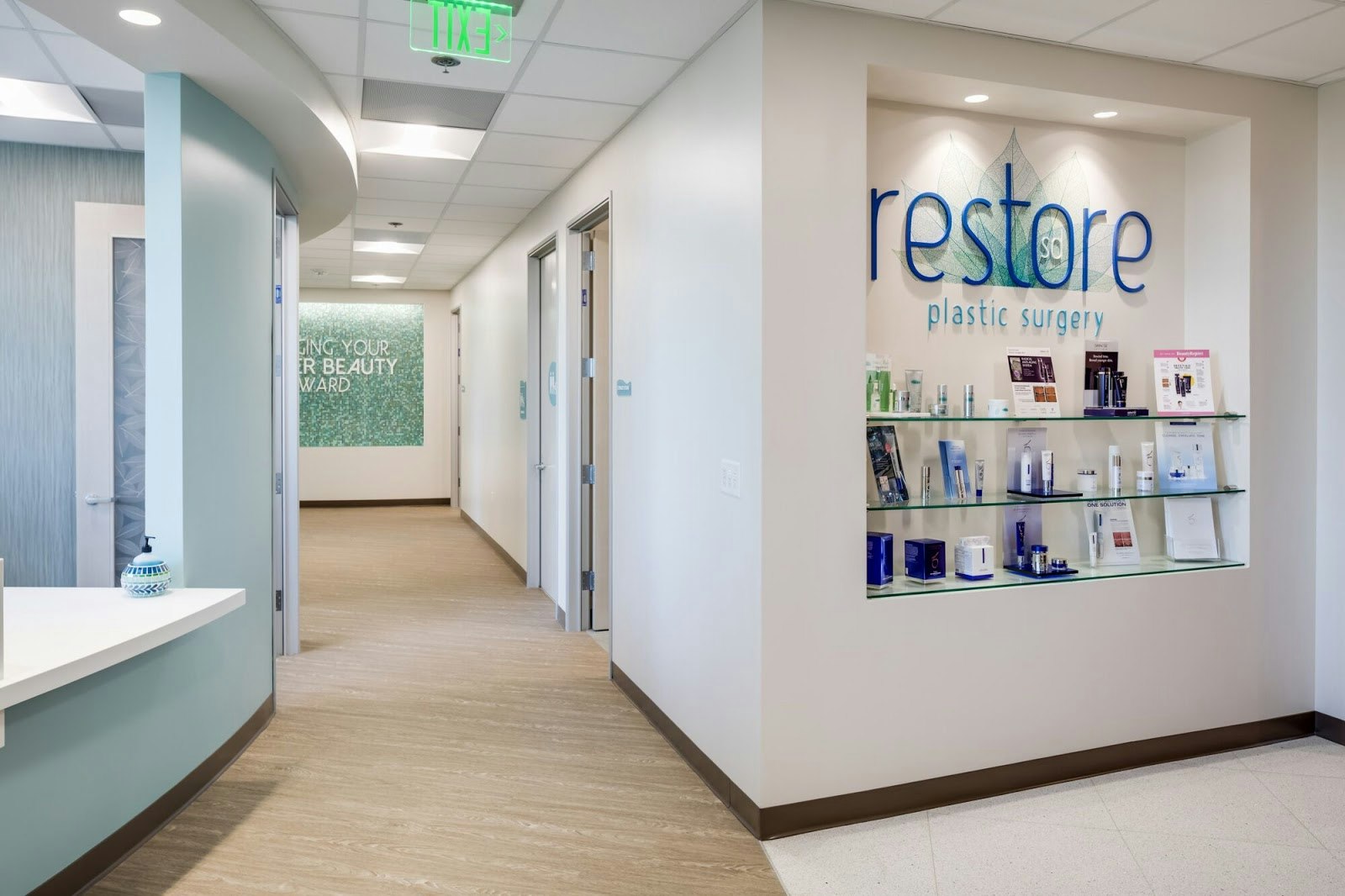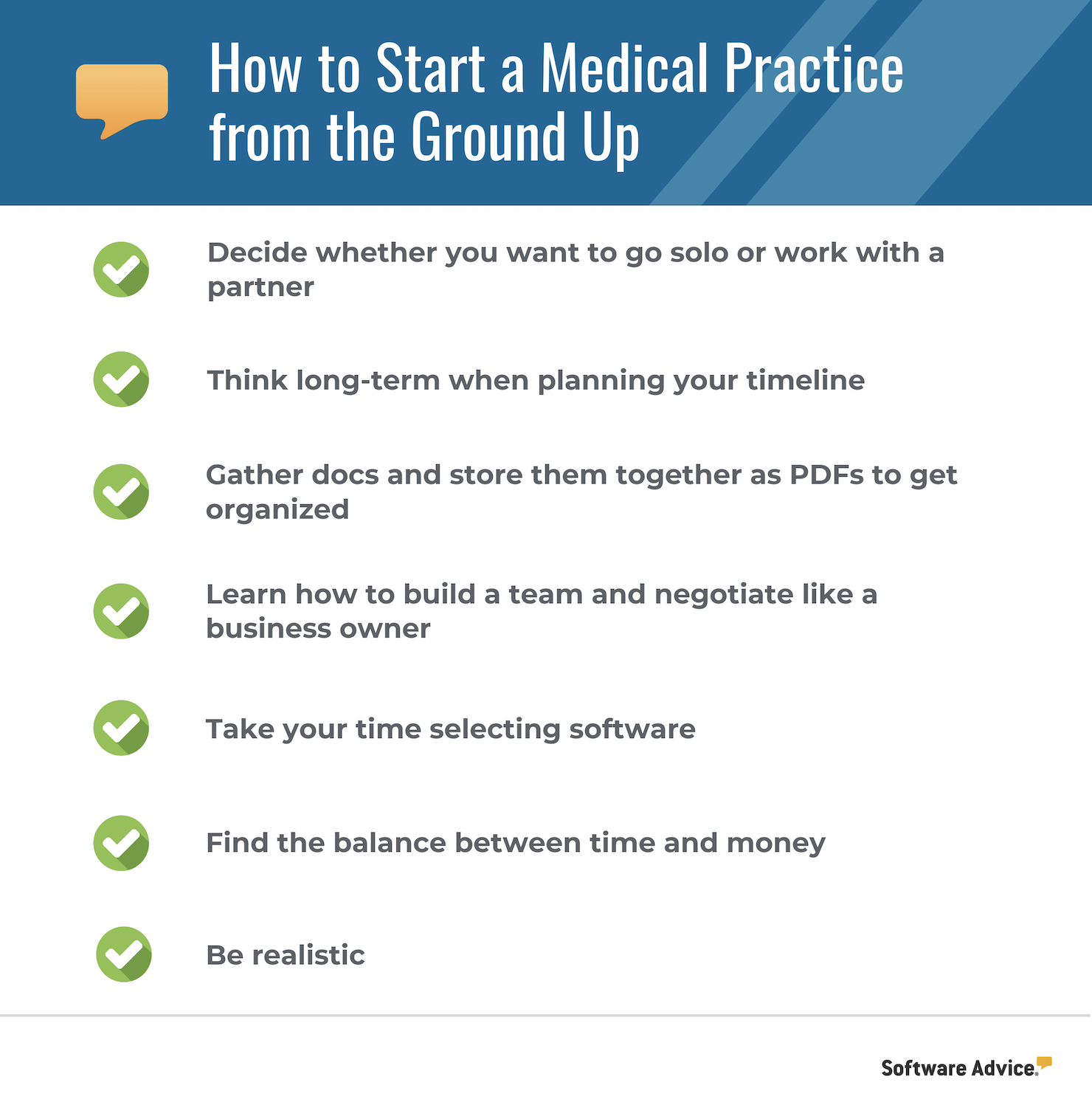How to Start a Medical Practice From the Ground Up: A Case Study
Building your own medical practice from the ground up is no easy feat.
Juggling the myriad details and steps involved—finding a location, adhering to government-mandated regulations, understanding and managing the revenue cycle, investing in the right software tools and keeping up with patient satisfaction … to name a few—means physicians can easily become overwhelmed and miss crucial steps in the process.
But owning your own practice is worth the effort for many physicians who enjoy the freedom it affords—whether that means managing employees, making decisions about which insurance carriers to accept or even picking out colors for the office decor.
If you’re one of those physicians who craves autonomy and wants to start your own practice, you’ll undoubtedly find it helpful to learn from others who have been through the process and come out the other side.
That’s why we spoke with Dr. Trent Douglas, who gave us seven life-saving tips for starting an independent practice that will help you succeed.

Dr. Trent Douglas
Owner of Restore SD Plastic Surgery
With Dr. Douglas’s expert advice, we’ll cover seven tips for preparing to open a successful medical practice.
Dr. Douglas earned his medical degree from the Emory University School of Medicine before completing a general surgery residency at the Naval Medical Center San Diego. After his residency, he returned to Emory University for a plastic surgery residency so he could then go back to serve as a plastic surgeon at the Naval Medical Center for 11 years.
Dr. Douglas and his partner, Dr. Katerina Gallus, opened Restore SD Plastic Surgery earlier this year after first discussing the idea nearly five years ago. The amount of work they both put into turning the concept into a reality is extensive, and Dr. Douglas now has a firm grasp on the size and scope of the undertaking.


Restore SD before and after
He’s learned valuable lessons—so valuable that his practice has won multiple awards since opening its doors. In fact, he and his partner now teach a class through the American Society for Aesthetic Plastic Surgery on starting a medical practice, with tips that apply to all specialties.
Here’s what we’ll cover:

Tip 1: Decide Whether You Want to Go Solo or Work With a Partner
As daunting as opening a new practice is, it can be even more intimidating to do it all alone. That’s why many physicians are inclined to find a partner to share the journey and responsibilities with.
 I think having a partner is just about the only way you can have a private practice these days.
I think having a partner is just about the only way you can have a private practice these days.
The sheer volume of work to get everything up, running and going is overwhelming at best, so […] one of the benefits of our partnership was that we could really talk things out and make good, sound financial decisions.
In addition to providing a sounding board where you can talk through decisions before spending money, a partner offers other valuable benefits:
More seed money that doesn’t all have to come from one place
Divided workloads so one person isn’t solely responsible for everything
That said, there is one big drawback that may make partnership a dealbreaker for some, and that is the sacrifice of complete control.
Having a partner means making compromises and working together on every single aspect of running your practice, so that’s why choosing the right partner—or whether you want a partner at all—is a major decision and should be the first step in opening your own practice.
Tip 2: Think Long Term When Planning Your Timeline
Starting a medical practice is such a monumental, sprawling task that you might want to just focus on what’s right in front of you and take things one step at a time. Dr. Douglas believes you need to resist this temptation and create a timeline for yourself that sets out goals for accomplishing every task:
 We allowed ourselves plenty of time to learn about what was going to go into this, and the American Medical Association publishes a great book called Starting a Medical Practice that turned out to be a great resource as far as building the foundation for any medical practice—not just a plastic surgery practice.
We allowed ourselves plenty of time to learn about what was going to go into this, and the American Medical Association publishes a great book called Starting a Medical Practice that turned out to be a great resource as far as building the foundation for any medical practice—not just a plastic surgery practice.
So we set a timeline for things like:
Writing a business plan
Obtaining a loan
Starting to look for office space
Figuring out what our human resources were going to look like
Number of staff
What our budget was going to be
What type of services we wanted to offer
And then just started vetting things out from there.
Two keys to creating a successful and realistic timeline are:
Be as detailed as possible. Include everything from when you’ll start looking for a space, what realtor you’ll use, what your criteria will be, how much you can spend etc., to when you’ll create and launch your website.
Don’t end the timeline when you open your practice. Carry it through at least the first six months of being open, if not further. This lets you plan out when you’ll start thinking about things such as attracting more patients, optimizing your online presence, patient satisfaction etc.
Tip 3: Gather Docs and Store Them Together in PDF Format to Get Organized
This suggestion comes hand-in-hand with creating your timeline, with the slight distinction being you’ll also need to collect a ton of important documents and have them readily available during the various credentialing, licensing and insurance processes.
You’re going to be getting lots of emails asking for lots of documents when opening your practice, so having these papers stored in files where you can quickly access them is going to help tremendously when it comes to speeding up these workflows.
 Getting organized right from the beginning is absolutely key. We have a list of recommended documents that you should get together that usually involves the following:
Getting organized right from the beginning is absolutely key. We have a list of recommended documents that you should get together that usually involves the following:
Last three months of pay stubs
Last three years of tax returns
Your medical license number
Organize all of these documents in files according to their uses (for example, docs that will be needed for credentialing, docs that will be needed for licensing, docs that will be needed for insurance etc.) and store them in PDF format so you can access them and send them off as quickly as possible.
Tip 4: Learn How to Build a Team and Negotiate Like a Business Owner
This is something we’ve talked about a good deal in previous articles, but learning how to manage a business as well as run a medical practice is a big step in finding success. Dr. Douglas had two pieces of advice for this:
 First, get sound professional advisers around you, including a competent attorney as well as an accountant that is familiar with dealing with medical practices.
First, get sound professional advisers around you, including a competent attorney as well as an accountant that is familiar with dealing with medical practices.
Second, learn to negotiate because the first offer is never the final deal. Most physicians are not very adept at negotiating because everything’s been taken care of for them through their training and […] they haven’t really had to work with people that are trying to sell them things.
This is incredibly helpful when it comes to supplementing your own knowledge and skill set, which every successful practice owner does. Building a strong team to support you is crucial, so don’t rush when it comes to vetting the people you’ll work with and hiring employees.
Likewise, you shouldn’t hurry through any vendor negotiations. You could be entering into contracts that last years, so it’s imperative that you do your research before these negotiations to make sure you’re getting the best deals possible.
Dr. Douglas identified the most difficult part of opening his practice and offered another piece of valuable wisdom:
 The most difficult hurdle was probably getting our small business association loan. The whole process of securing a financing package was unfamiliar to us, so that took us quite a bit of time.
The most difficult hurdle was probably getting our small business association loan. The whole process of securing a financing package was unfamiliar to us, so that took us quite a bit of time.
And of everything that we did, I would say that was probably the most stressful part of starting up a new practice—learning to work with the bank.
Securing financing is one of the top three biggest challenges for most physicians, so preparing for this step will make all the difference.
Consider working with a consultant who specializes in medical practices to help you create your business proposal, and try to find banks with loan departments that have some specialization or understanding of the health care industry, as these could prove to be more successful options.
Tip 5: Take Your Time Selecting Software
Electronic health records can be a touchy subject for some physicians, and whether or not you like them depends largely on how much you used them in your training. But the truth is, they do improve patient care and outcomes, and they’re valuable tools for keeping you organized and compliant.
For Dr. Douglas, the decision to use an EHR wasn’t difficult because they didn’t have existing patient records that needed to be transferred to an electronic system (although there are ways to switch systems if that’s not your situation). Dr. Douglas offered his advice for seeking out specialty medical software:
 In the two years leading up to opening the practice, we spent time going to trade shows and meetings and looking at the different platforms that were available to us.
In the two years leading up to opening the practice, we spent time going to trade shows and meetings and looking at the different platforms that were available to us.
Specialty-specific options are more limited for plastic surgery, so we looked at price points, tested our options and talked to more people who were using different systems to learn about their experiences and find out which would be the best, most functional option for us.
Going to trade shows is an outstanding suggestion, especially if you can work it into your timeline to give yourself plenty of time. Additionally, you can check out a number of our articles to help you pinpoint what you need from an EHR and identify which systems provide those features. Read more here:
Tip 6: Find the Balance Between Time and Money
This is perhaps one of the biggest struggles physicians face with any given task when opening new practices: Do you spend money to pay a professional or consultant to do it for you, or do you spend time learning how to do it yourself?
Unfortunately, there’s no hard and fast answer to this question because it’s going to depend entirely on your budget and personal preferences:
 Recognize the struggle of time vs. money; you can spend your own time on it and save money, or you can pay somebody else to do it.
Recognize the struggle of time vs. money; you can spend your own time on it and save money, or you can pay somebody else to do it.
Finding that balance is the real key because you want to have your practice and your brand reflect you and your own thoughts and perspectives.
You can hire somebody to write every single word of your website and do everything for you—essentially give you a turnkey operation—or you can invest your own time and energy in it to save some money, but you’re on a different part of the learning curve.
So there are many different ways of going about this.
And how you choose to go about it depends entirely on your preferences. It’s up to you to decide if you’d rather do the work and save the money, or spend the money and save the work on things like:
Creating a website
Managing patient relationships
Outsourcing your billing
Just make sure you find the balance that works for you, because too much of either can have consequences—you’ll either blow your budget, or you’ll work yourself straight to burnout before you even open.
Tip 7: Be Realistic
And finally, Dr. Douglas shared one last insight to help physicians through this difficult (but rewarding!) process:
 Make sure that your vision for your practice matches reality.
Make sure that your vision for your practice matches reality.
Right out of the box, you’re probably not going to be able to afford the giant flowing water feature and gold gilded office setting, so make sure you have a realistic budget and timeline for what you’re trying to accomplish.
And again, the answers can be different for everybody:
Somebody who is leaving academic or community hospital-based medicine to enter private practice is going to be at a different financial point than somebody who’s just out of training, has accumulated quite a bit of student debt and may not have the credit to secure a significant business start-up loan.
The truth is you simply can’t embark on this journey to start a medical practice from the ground up if you don’t have ambition, but too much ambition can do more harm than good. Know your limits, be reasonable in planning your budget and timeline, and learn the facts so you can remain as objective and realistic throughout the process as possible.
What’s Next? A Checklist!
And there you have it: Seven tips from a professional on how to start your independent medical practice. Now that you’ve heard from the expert and hopefully learned a few things you didn’t already know, you’re probably wondering where to go from here.
Here’s your two-part answer:
First, go to the American Medical Association’s website and look for their resources on starting a medical practice. Whether you purchase the book Dr. Douglas recommended or find a different resource that’s better suited to your specialty, just spend some time looking for information to help you work through these details.
Second, check out our New Medical Practice Checklist for a quick guide to help you think through everything you’ll need, come up with your timeline, and stay organized as you work through the process.